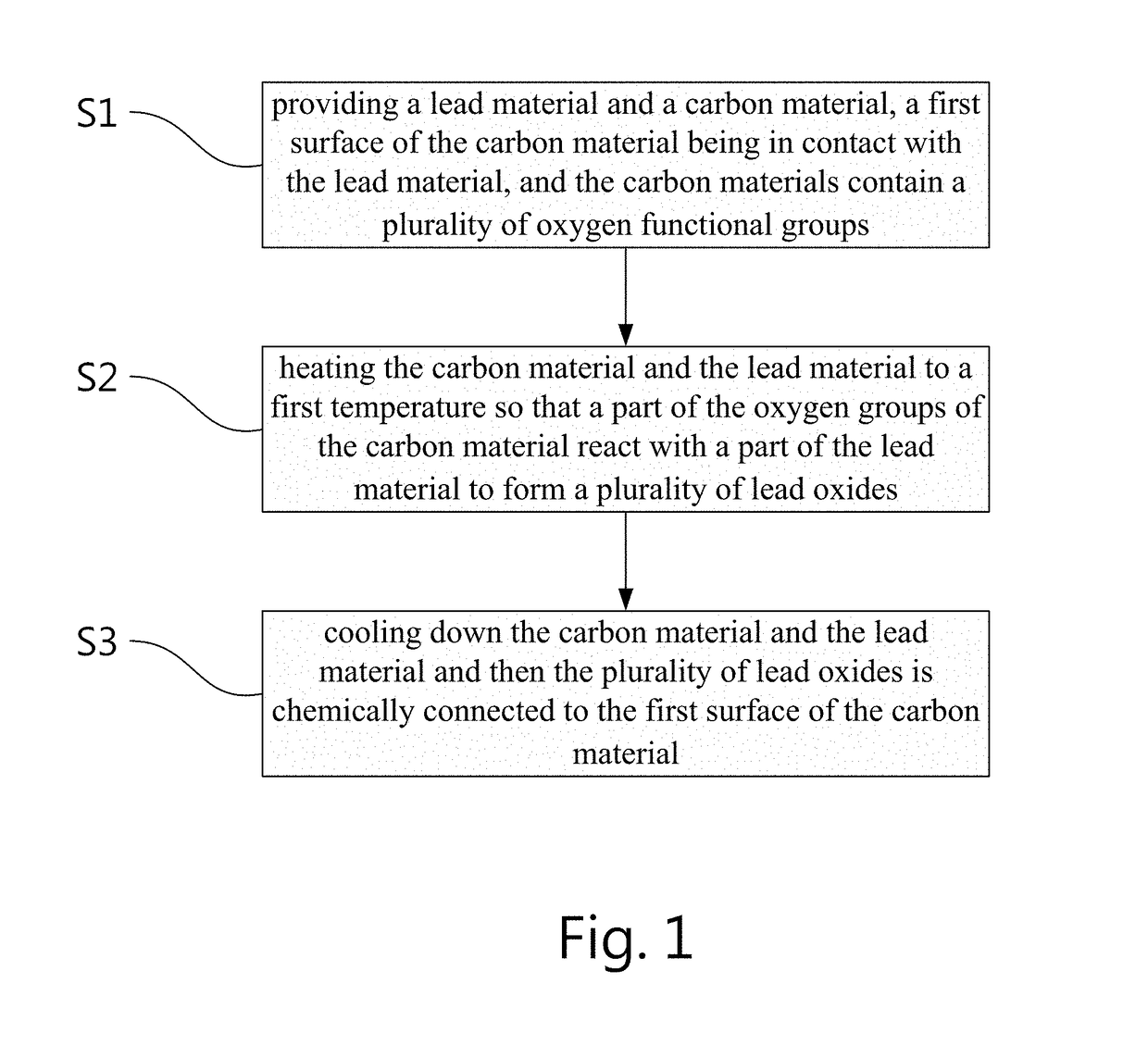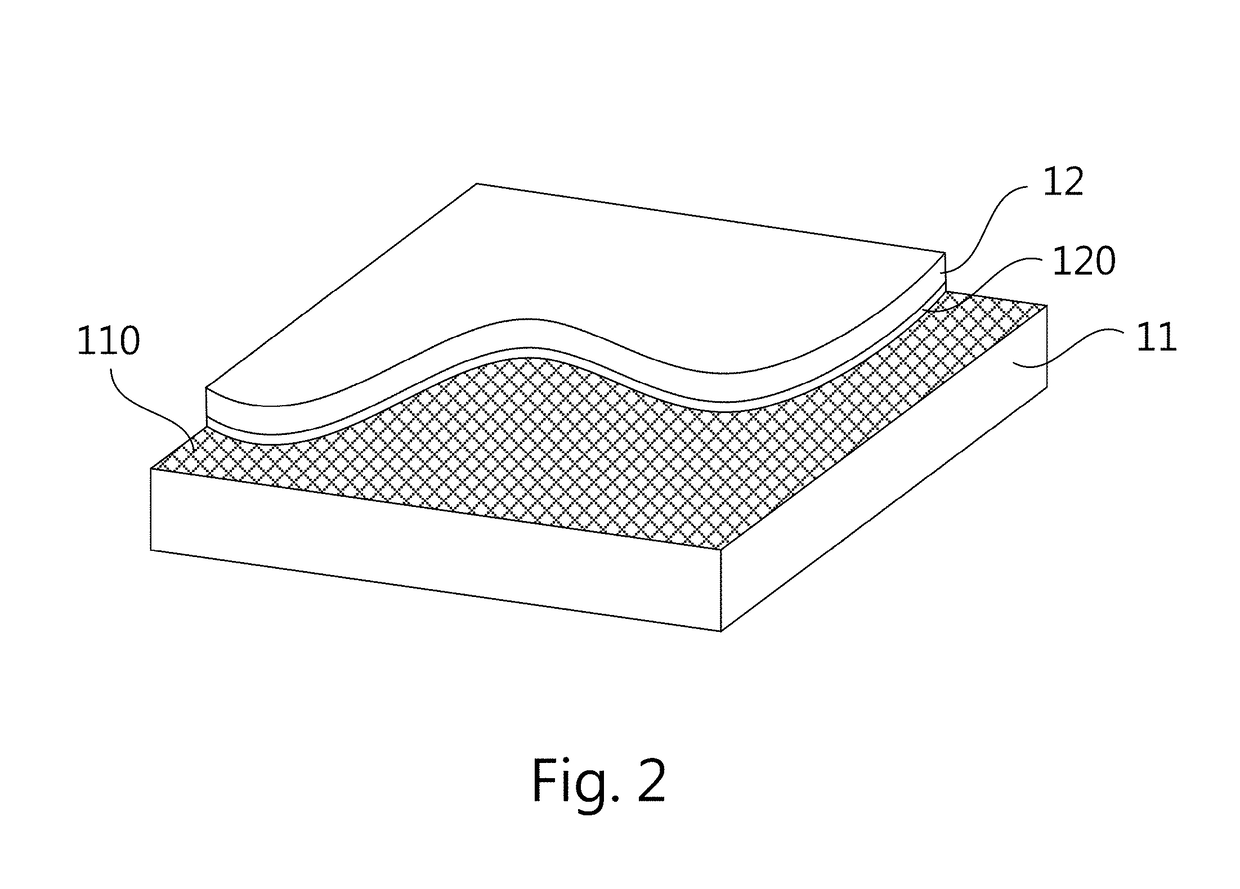Methods for making lead-carbon couplings, lead-carbon electrode sheets and lead-carbon batteries
a technology of lead-carbon electrode sheets and lead-carbon batteries, which is applied in the direction of cell components, final product manufacturing, sustainable manufacturing/processing, etc., can solve the problems of lack of convenient methods, difficult to form a stable lead-carbon interface, and limit the maximum amount of added carbon materials to 5 wt %, so as to achieve high electrochemical stability
- Summary
- Abstract
- Description
- Claims
- Application Information
AI Technical Summary
Benefits of technology
Problems solved by technology
Method used
Image
Examples
Embodiment Construction
[0031]In order to better understand the features and the functions of the present invention, please refer to the following embodiments and the related figures.
[0032]As shown in FIG. 1, a method for making an electrochemically stable lead-carbon coupling consists of the following steps.[0033]Step S1: provide a carbon material and a lead material assembled in such a configuration that a first surface of the carbon material is in contact with the lead material while the carbon material includes a plurality of oxygen functional groups connected to the first surface of the carbon material;[0034]Step S2: heat the assembled lead and carbon materials to a first temperature so that a part of oxygen functional groups reacts with a part of the lead material to form lead oxides that are coupled to the carbon and the lead materials; and[0035]Step S3: cool down the coupled carbon and lead materials; a part of the lead material that already forms lead oxides is chemically connected to the first su...
PUM
| Property | Measurement | Unit |
|---|---|---|
| pressure | aaaaa | aaaaa |
| surface tension | aaaaa | aaaaa |
| surface tension | aaaaa | aaaaa |
Abstract
Description
Claims
Application Information
 Login to View More
Login to View More - R&D
- Intellectual Property
- Life Sciences
- Materials
- Tech Scout
- Unparalleled Data Quality
- Higher Quality Content
- 60% Fewer Hallucinations
Browse by: Latest US Patents, China's latest patents, Technical Efficacy Thesaurus, Application Domain, Technology Topic, Popular Technical Reports.
© 2025 PatSnap. All rights reserved.Legal|Privacy policy|Modern Slavery Act Transparency Statement|Sitemap|About US| Contact US: help@patsnap.com



